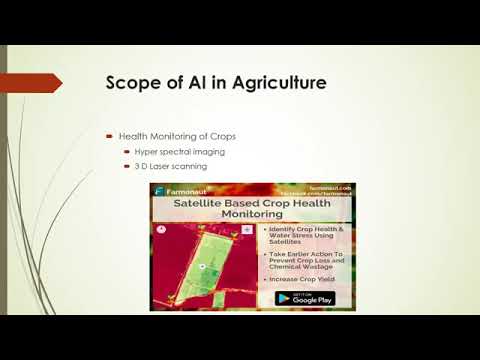Effingham County Demands Thorough Environmental Testing After Chemical Plant Fire: Ensuring Community Safety and Water Quality
“Effingham County’s chemical plant fire required specialized foam to extinguish chemically coated materials, raising concerns about soil and water contamination.”
In the wake of a recent chemical plant fire in Effingham County, Georgia, we find ourselves at the forefront of a critical environmental and public safety issue. The incident has not only sparked concerns among local residents but has also ignited a broader debate on the adequacy of state and federal oversight in such industrial emergencies. As we delve into this complex situation, it’s crucial to understand the multifaceted nature of the problem and the community’s response to ensure the safety and well-being of both the environment and its inhabitants.
The Incident: A Closer Look at the Chemical Plant Fire
On a seemingly ordinary day in Springfield, Georgia, the DRT America plant became the epicenter of an environmental crisis that would soon capture the attention of the entire Effingham County community. The fire, which broke out unexpectedly, required an immediate and specialized response from local emergency services. Effingham County Fire Rescue swiftly arrived at the scene, faced with the daunting task of extinguishing flames that engulfed eight pallets of chemically coated materials stored outside the facility.
The use of foam to combat the fire raised immediate red flags among environmental experts and local officials. Aqueous film-forming foam (AFFF), while effective in extinguishing chemical fires, is known to contain potentially harmful compounds that can persist in the environment. This fact alone necessitated a thorough investigation into potential soil and water contamination, particularly in the nearby Ebenezer Creek, a waterway of significant ecological and historical importance to the county.

Community Response and Environmental Concerns
The response from the Effingham community was swift and unified. County council members, staff, and residents voiced their apprehensions about potential environmental hazards that might have gone unnoticed by state and federal agencies. The incident quickly became a rallying point for those advocating for stricter environmental protection measures and more transparent industrial safety regulations.
Damon Rahn, Effingham County Council Chairman, expressed the sentiment shared by many when he stated, “I feel this has been rushed, and the due diligence has not been done to prove that this is a non-issue.” This statement underscores the community’s demand for a more comprehensive and thorough investigation into the potential environmental impacts of the fire.
The Role of Environmental Protection Agencies
In the aftermath of the fire, the Georgia Environmental Protection Division (EPD) promptly dispatched investigators to the site. Their initial findings, released less than 24 hours after the incident, concluded that there were no apparent risks to people or the environment. However, this rapid assessment has been met with skepticism from county officials and residents alike.
The EPD’s investigation primarily focused on air monitoring, leaving crucial questions about soil and water quality unanswered. This approach has been criticized by local leaders who argue that a more comprehensive testing regimen is necessary to ensure the safety of the community and the preservation of vital natural resources like Ebenezer Creek.
The Importance of Thorough Environmental Testing
Environmental testing plays a pivotal role in assessing the impact of industrial incidents on surrounding ecosystems and communities. In the case of the Effingham County chemical plant fire, comprehensive testing is crucial for several reasons:
- Soil Contamination: Chemical fires can release various pollutants that may seep into the soil, affecting plant life and potentially entering the food chain.
- Water Quality: Runoff from firefighting efforts and potential chemical leaks can contaminate water sources, impacting aquatic life and drinking water supplies.
- Long-term Environmental Effects: Some chemicals can persist in the environment for extended periods, necessitating ongoing monitoring and remediation efforts.
- Public Health: Accurate testing helps identify any potential health risks to the community, allowing for appropriate preventive measures and treatments if necessary.
“Despite rapid investigation by the Environmental Protection Division, Effingham County officials demand more comprehensive testing of Ebenezer Creek’s water quality.”
The Call for Comprehensive Testing
Clint Hodges, ECFR Chief and Emergency Management Director, articulated the county’s position clearly: “If there’s any way, you know, we could ask for additional testing, soil and water testing from the EPD or EPA, that’s just our main request. I mean it’s the Environmental Protection Division. That’s what they do. That’s what we really need.”
This call for action reflects a growing trend in communities across the United States, where citizens and local governments are increasingly demanding more rigorous environmental oversight and protection measures. The incident in Effingham County serves as a prime example of how industrial safety and environmental protection are inextricably linked to community well-being and trust in governmental institutions.
Ebenezer Creek: A Vital Natural Resource at Risk
At the heart of the environmental concerns in Effingham County lies Ebenezer Creek, a waterway of immense ecological and historical significance. Phil Kieffer, Effingham County Commissioner for District 5, emphasized the creek’s importance: “For the last 300 years, you know, it’s been kind of the lifeblood of Effingham County. As a county we take pride in that creek and have a lot of concerns with what may be going into it.”
The potential contamination of Ebenezer Creek not only threatens local wildlife and ecosystems but also raises concerns about the broader implications for water quality in the region. This situation underscores the critical need for comprehensive water quality monitoring and protection strategies, especially in areas with significant industrial activity.

The Role of Technology in Environmental Monitoring
In addressing the environmental concerns raised by the Effingham County chemical plant fire, it’s crucial to consider the role of advanced technology in environmental monitoring and protection. Companies like Farmonaut, while primarily focused on agricultural applications, demonstrate the potential of satellite-based monitoring systems in environmental management.
Farmonaut’s technology, which utilizes satellite imagery and AI for crop health monitoring, could potentially be adapted for environmental monitoring purposes. While not directly applicable to chemical spill detection, the principles of remote sensing and data analysis employed by such systems could inform the development of more comprehensive environmental monitoring tools.
For instance, satellite-based monitoring could be used to track changes in vegetation health around industrial sites, potentially indicating soil or water contamination. Similarly, AI-driven analysis of multispectral imagery could help identify anomalies in water bodies like Ebenezer Creek, alerting authorities to potential pollution events.
Environmental Testing Comparison
| Testing Method | Parameters Measured | Turnaround Time | Sensitivity Level |
|---|---|---|---|
| Soil Sampling | Heavy metals, organic compounds, pH | 3-5 days | Parts per million (ppm) |
| Water Quality Analysis | Dissolved oxygen, turbidity, chemical contaminants | 24-48 hours | Parts per billion (ppb) |
| Air Quality Monitoring | Particulate matter, volatile organic compounds | Real-time to 24 hours | Parts per million (ppm) |
| Vegetation Assessment | Chlorophyll content, leaf area index | 1-2 weeks | Varies by parameter |
The Importance of Continuous Monitoring and Preparedness
The incident at the DRT America plant is not an isolated event. In 2022, the same facility experienced an explosion involving an on-site oxidizer tank, and in 2023, a spill of 500 gallons of pretreated sulfate turpentine occurred, causing strong odors and potential health risks in the community. These recurring incidents highlight the need for continuous monitoring and improved preparedness in industrial areas.
Tim Callanan, Effingham County Manager, emphasized this point: “We want to make sure that every time happens that we are pushing and trying to get a response to prevent a more severe event from occurring.” This proactive approach is essential in mitigating the risks associated with industrial activities and safeguarding community health and environmental integrity.
The Role of Local Government in Environmental Oversight
The Effingham County incident underscores the critical role that local governments play in environmental oversight and protection. While state and federal agencies like the EPD and EPA have primary jurisdiction in many environmental matters, local officials often serve as the first line of defense and advocacy for their communities.
Local governments can:
- Implement stricter local ordinances for industrial safety and environmental protection
- Conduct regular inspections and audits of industrial facilities
- Establish community-based environmental monitoring programs
- Facilitate open communication between industry, regulators, and residents
- Advocate for more comprehensive state and federal oversight when necessary
By taking a proactive stance on environmental issues, local governments can help prevent incidents and ensure rapid, effective responses when they do occur.
Community Engagement and Environmental Awareness
The response to the Effingham County chemical plant fire demonstrates the power of community engagement in environmental protection. Informed and engaged citizens play a crucial role in holding both industry and regulatory bodies accountable. To foster this engagement, communities can:
- Organize educational workshops on local environmental issues and industrial safety
- Establish citizen science programs for monitoring local water and air quality
- Create forums for open dialogue between residents, local officials, and industry representatives
- Advocate for transparency in industrial operations and environmental testing results
By empowering residents with knowledge and tools to participate in environmental monitoring and decision-making, communities can build resilience and ensure that their voices are heard in matters affecting their health and environment.
Explore Farmonaut’s API for environmental monitoring applications
The Way Forward: Balancing Industry and Environmental Protection
As we navigate the complexities of industrial development and environmental protection, it’s clear that a balanced approach is necessary. While industries like the DRT America plant provide economic benefits to communities, they must operate within a framework that prioritizes safety and environmental stewardship.
Key steps towards achieving this balance include:
- Implementing more rigorous safety protocols and environmental monitoring systems at industrial facilities
- Enhancing communication and cooperation between industry, regulators, and local communities
- Investing in research and development of cleaner, safer industrial processes
- Strengthening regulatory frameworks to ensure comprehensive oversight and rapid response to incidents
- Promoting transparency in industrial operations and environmental testing results
By adopting these measures, we can work towards a future where industrial activity and environmental protection coexist harmoniously, ensuring the safety and well-being of communities like Effingham County.
Leveraging Technology for Environmental Protection
As we continue to address environmental challenges like those faced in Effingham County, it’s crucial to explore how cutting-edge technology can enhance our ability to monitor and protect our natural resources. While Farmonaut’s primary focus is on agricultural applications, the principles behind its technology offer valuable insights for environmental monitoring.
Satellite-based monitoring systems, similar to those used by Farmonaut for crop health assessment, could be adapted to track environmental changes in industrial areas. These systems could potentially:
- Detect changes in vegetation health that might indicate soil or water contamination
- Monitor water bodies for signs of pollution or chemical runoff
- Provide real-time data on air quality and particulate matter levels
- Aid in rapid response to environmental emergencies by offering a broad view of affected areas
While not a direct solution to chemical spill detection, the integration of such technologies into environmental monitoring protocols could significantly enhance our ability to protect vital ecosystems and community health.
Learn more about satellite-based monitoring through Farmonaut’s API Developer Docs
The Importance of Sustainable Industrial Practices
The Effingham County incident serves as a stark reminder of the need for more sustainable industrial practices. As we move forward, it’s essential to consider how industries can operate more safely and with less environmental impact. This includes:
- Implementing closed-loop systems to minimize waste and potential for spills
- Investing in green chemistry initiatives to develop safer chemical alternatives
- Adopting energy-efficient processes to reduce overall environmental footprint
- Establishing robust emergency response protocols and regular safety drills
- Engaging in ongoing environmental impact assessments and transparency reporting
By prioritizing these sustainable practices, industries can reduce the likelihood of incidents like the Effingham County fire and build trust with the communities in which they operate.
Community Resilience and Long-term Environmental Health
Building community resilience in the face of environmental challenges is crucial for long-term health and sustainability. This involves not only responding to immediate crises but also developing strategies for ongoing environmental protection and community engagement. Key aspects include:
- Establishing community-based environmental monitoring programs
- Developing local emergency response plans that address industrial and environmental hazards
- Creating green spaces and conservation areas to buffer industrial zones
- Implementing educational programs to raise awareness about local ecosystems and environmental issues
- Fostering partnerships between community organizations, local government, and industry for collaborative problem-solving
By focusing on these areas, communities like Effingham County can build resilience and ensure their ability to protect their environment and quality of life for generations to come.
The Role of Policy and Regulation in Environmental Protection
The Effingham County chemical plant fire highlights the critical role that policy and regulation play in environmental protection. As we move forward, it’s essential to consider how existing regulations can be strengthened and new policies implemented to prevent similar incidents and ensure rapid, effective responses when they do occur. Key areas for policy focus include:
- Stricter guidelines for chemical storage and handling in industrial facilities
- Enhanced requirements for environmental impact assessments and ongoing monitoring
- Improved protocols for emergency response and community notification
- Increased funding for environmental protection agencies to enhance oversight capabilities
- Incentives for industries to adopt cleaner, safer technologies and practices
By addressing these policy areas, we can create a more robust framework for environmental protection that balances industrial needs with community safety and ecological health.
The Future of Environmental Monitoring and Protection
As we look to the future, it’s clear that environmental monitoring and protection will continue to evolve, driven by advances in technology and a growing awareness of environmental issues. Some key trends and developments to watch include:
- Integration of AI and machine learning in environmental data analysis
- Expansion of citizen science initiatives for widespread environmental monitoring
- Development of more sensitive and accurate sensors for detecting environmental contaminants
- Increased use of blockchain technology for transparent tracking of industrial processes and waste management
- Growing emphasis on predictive modeling to anticipate and prevent environmental incidents
These advancements promise to enhance our ability to protect the environment and respond quickly to potential threats, ensuring safer, healthier communities for all.
Conclusion: A Call for Collective Action
The Effingham County chemical plant fire serves as a powerful reminder of the ongoing challenges we face in balancing industrial activity with environmental protection and community safety. It underscores the need for vigilance, thorough testing, and comprehensive oversight in industrial areas. As we move forward, it’s clear that addressing these challenges requires a collective effort involving local communities, government agencies, industry leaders, and environmental experts.
By demanding thorough environmental testing, implementing advanced monitoring technologies, and fostering open dialogue between all stakeholders, we can work towards a future where industrial progress and environmental stewardship go hand in hand. The path forward requires commitment, innovation, and a shared vision of a safer, cleaner, and more sustainable future for all communities.
FAQ Section
Q: What immediate actions were taken after the chemical plant fire in Effingham County?
A: Effingham County Fire Rescue responded to the scene and used specialized foam to extinguish the fire involving chemically coated materials. The Georgia Environmental Protection Division (EPD) also conducted an initial investigation, focusing primarily on air monitoring.
Q: Why are county officials calling for more comprehensive testing?
A: County officials believe the initial EPD investigation was rushed and insufficient. They are particularly concerned about potential soil and water contamination, especially in Ebenezer Creek, which wasn’t addressed in the initial air quality tests.
Q: What are the potential environmental risks associated with chemical plant fires?
A: Chemical plant fires can lead to air pollution, soil contamination, and water pollution. The use of firefighting foam can also introduce additional chemicals into the environment, potentially affecting ecosystems and human health.
Q: How can communities better prepare for industrial incidents like this?
A: Communities can improve preparedness by developing comprehensive emergency response plans, conducting regular safety drills, implementing community-based environmental monitoring programs, and fostering open communication between residents, local officials, and industry representatives.
Q: What role does technology play in environmental monitoring and protection?
A: Advanced technologies like satellite imaging, AI-driven data analysis, and remote sensing can enhance environmental monitoring capabilities. These tools can help detect changes in vegetation health, water quality, and air composition, aiding in rapid response to environmental emergencies.
Earn With Farmonaut: Affiliate Program
Earn 20% recurring commission with Farmonaut’s affiliate program by sharing your promo code and helping farmers save 10%. Onboard 10 Elite farmers monthly to earn a minimum of $148,000 annually—start now and grow your income!






